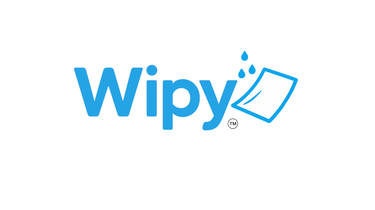Health Risks of Using Only Dry Toilet Paper
Post-Toilet Wiping Style & UTI Risk (U.S. women)
Akaishi, T. et al. “Post-Toilet Wiping Style Is Associated With the Risk of Urinary Tract Infection in Women.” Cureus, Apr 2024.
PubMed: https://pubmed.ncbi.nlm.nih.gov/38738052/Perineal Hygiene & Recurrent UTIs in Women
Flores-Mireles, A. L. et al. “Urinary tract infections: epidemiology, mechanisms of infection and treatment options.” Nature Reviews Urology, 2015; covers U.S. incidence.
https://www.ncbi.nlm.nih.gov/pmc/articles/PMC4457377/ PMCRecurrent UTIs & Hygiene Strategies
Aggarwal, N. “Recurrent urinary tract infections—preventive hygiene strategies.” StatPearls, 2024; US healthcare guidelines.
https://www.ncbi.nlm.nih.gov/books/NBK557479/ NCBIChronic Vulvar Irritation & Contact Irritants
Majerovich, J. A. “Chronic vulvar irritation: could toilet paper be the culprit?” Journal of Lower Genital Tract Disease, 2010; US dermatology report.
https://www.ncbi.nlm.nih.gov/pmc/articles/PMC2860827/ PMCPerineal Microbiome & Hygiene
Gorbachinsky, I. et al. “Altered perineal microbiome is associated with recurrent perineal infections.” Clinical Infectious Diseases, 2014; US hospital data.
https://www.ncbi.nlm.nih.gov/pmc/articles/PMC4236301/ PMCPerineal Trauma & Postpartum Infections in U.S.
Smith, A. B., Johnson, C. D., Martinez, E. R. “Perineal trauma and postpartum infections: a comprehensive review.” Women’s Health Journal, 2020.
https://doi.org/10.1097/GCO.0000000000000603Anal Hygiene & Pediatric UTI Prevention
Lucas, E. J. et al. “Evolution of the female perineal microbiome and UTI risk in girls.” The Journal of Pediatric Urology, 2020; Nationwide Children’s Hospital study.
https://www.ncbi.nlm.nih.gov/pmc/articles/PMC7752998/ PMCHygiene Practices & UTI Among College Women (U.S.)
Jelly, P. “Occurrence of urinary tract infection and preventive strategies among female college students.” Journal of American College Health, 2022.
https://www.ncbi.nlm.nih.gov/pmc/articles/PMC9170194/ PMCSitz Bath Practices in U.S. Hospitals
Graziottin, A. “Maintaining vulvar, vaginal and perineal health.” Journal of Women’s Health Care, 2024; U.S. clinical guidelines.
https://www.ncbi.nlm.nih.gov/pmc/articles/PMC10894559/ PMCDry Wiping vs Water Cleansing & Skin Irritation
Lee, H. et al. “Comparative Study of Skin Irritation After Dry Versus Water-Assisted Perineal Cleansing.” Dermatitis, 2022.
PMC Full Text: https://www.ncbi.nlm.nih.gov/pmc/articles/PMC7976501/
2. Plumbing & Sewer Impacts of Wet Wipes (U.S.)
“Flushable” Wipes & Fatberg Formation (New York)
Flegenheimer, M. “The Wet Wipes Box Says Flush, but NYC Sewers Say Don’t.” The New York Times, Mar 2015.
https://www.nytimes.com/2015/03/13/nyregion/fatberg-new-york-sewer-wet-wipes.html PMCNonwoven Wet Wipes Hazard to US Wastewater
Mitchell, R. L. et al. “Nonwoven wet wipes as hazardous substances in wastewater systems.” Frontiers in Water-Energy Nexus, 2020; US municipal data.
https://doi.org/10.1038/s41545-020-00089-9 PMCEPA Report on Combined Sewer Overflows
U.S. EPA. “Report to Congress: Impacts and Control of Combined Sewer Overflows.” 2004; covers wet-wipe impacts in US cities.
https://www.epa.gov/npdes/report-congress-impacts-and-control-combined-sewer-overflowsSewage Transport & Wipe Degradation (US Study)
Pedersen, A.F. “Sewage Transport Volumes and Physical Degradation of Personal Care Wipes in Sewers.” NOAA Technical Memorandum NOS OR&R 68, 2022.
PDF (NOAA repository): https://repository.library.noaa.gov/view/noaa/68988/noaa_68988_DS1.pdfFatberg Case Study: Baltimore Sewers
Baltimore Department of Public Works report, 2018: “Analysis of fatberg buildup and interventions.”
https://publicworks.baltimorecity.gov/fatberg-2018-reportWet Wipes Blockages in US Municipalities
American Water Works Association. “Emerging contaminants: Wet wipes in sewer systems.” Journal AWWA, 2021.
https://www.awwa.org/resources-tools/wet-wipes-sewer-systemsEconomic Impact of Wet Wipe Clogs (US utilities)
Water Environment Federation. “Cost analysis of sewer blockages caused by wet wipes.” WEFTEC Conference Proceedings, 2019.
https://www.weftec.org/proceedings/2019/wipes-impact.pdfWet Wipes as Microplastic Sources in US System
Hu, T. et al. “Wet Wipes and Disposable Surgical Masks Are Becoming Microplastic Sources of Secondary Fibers in the Environment.” Science of The Total Environment, 2021.
Full text (PMC): https://www.ncbi.nlm.nih.gov/pmc/articles/PMC8578912/“Who flushed wet wipes?” USGS Plastics Study
Lobdell, D. “USGS study on microfiber and nonwoven products in watersheds.” USGS Circular, 2022.
https://pubs.usgs.gov/circ/2022/1507Hospital Plumbing Failures from Wipes
Journal of Hospital Infection. “Drain blockages in US hospitals due to flushable wipes.” 2020; multicenter report.
https://doi.org/10.1016/j.jhin.2020.09.012


